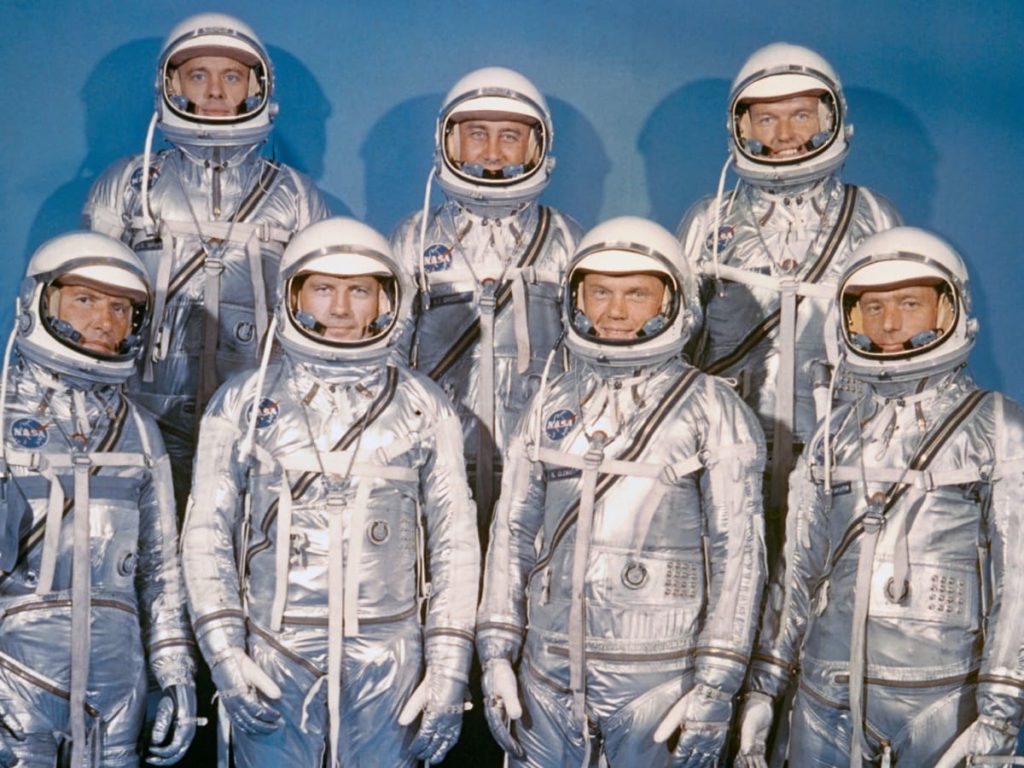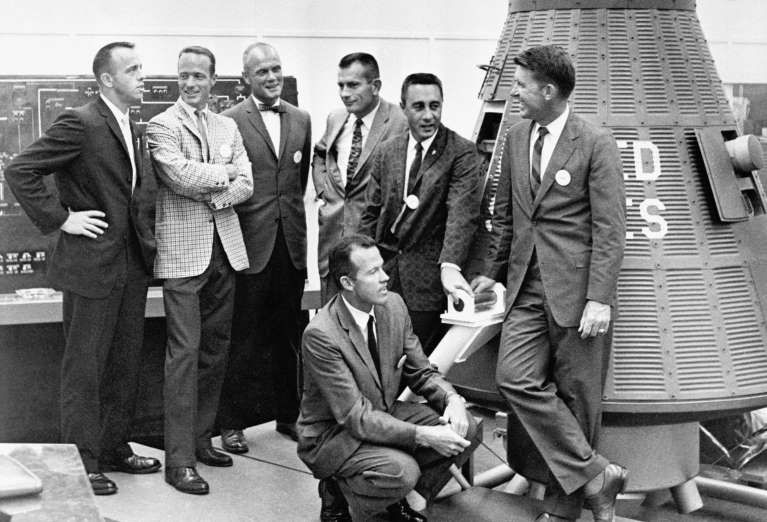“The seven men, all military test pilots, were carefully selected from a group of 32 candidates to take part in Project Mercury, America’s first manned space program.”
The following written content via History

On April 9, 1959, the National Aeronautics and Space Administration (NASA) introduces America’s first astronauts to the press: Scott Carpenter, L. Gordon Cooper Jr., John H. Glenn Jr., Virgil “Gus” Grissom, Walter Schirra Jr., Alan Shepard Jr. and Donald Slayton. The seven men, all military test pilots, were carefully selected from a group of 32 candidates to take part in Project Mercury, America’s first manned space program. NASA planned to begin manned orbital flights in 1961.
Subscribe here
On October 4, 1957, the USSR scored the first victory of the “space race” when it successfully launched the world’s first artificial satellite, Sputnik, into Earth’s orbit. In response, the United States consolidated its various military and civilian space efforts into NASA, which dedicated itself to beating the Soviets to manned space flight. In January 1959, NASA began the astronaut selection procedure, screening the records of 508 military test pilots and choosing 110 candidates. This number was arbitrarily divided into three groups, and the first two groups reported to Washington. Because of the high rate of volunteering, the third group was eliminated. Of the 62 pilots who volunteered, six were found to have grown too tall since their last medical examination. An initial battery of written tests, interviews, and medical history reviews further reduced the number of candidates to 36. After learning of the extreme physical and mental tests planned for them, four of these men dropped out.
The final 32 candidates traveled to the Lovelace Clinic in Albuquerque, New Mexico, where they underwent exhaustive medical and psychological examinations. The men proved so healthy, however, that only one candidate was eliminated. The remaining 31 candidates then traveled to the Wright Aeromedical Laboratory in Dayton, Ohio, where they underwent the most grueling part of the selection process. For six days and three nights, the men were subjected to various tortures that tested their tolerance of physical and psychological stress. Read more from History






